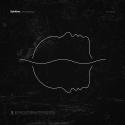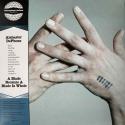Clichés about the frozen North aside, music from the Nordic countries is often described as redolent of glacial landscapes or icy wastelands. But the music of percussionist Terje Isungset goes further – his instruments are carved from Norwegian ice. Pulled up from the depths, his ice is 600 years old, crystal clear with no imperfections. Ice Music is literally that: music played on ice. Patting bars, hitting blocks and blowing through his ice trumpet, Isungset reflects Norway’s environment like no one else.
We may have recently reported on music made by ice-cream vans, but this was music made with actual ice. Ice Music took place on the terrace behind Somerset House in what was described as a “geodesic igloo”, not an ice-block structure but an igloo-shaped tent. Even so, it was enclosed enough to make you forget that Waterloo Bridge was 100 or so metres away. But it could never be a facsimile of Europe’s nether reaches, the source of Isungset’s ice.
Although Norwegian, Terje Isungset’s regular job is as the percussionist with the Swedish progressive folk outfit Groupa. Since 2000, when he was commissioned to make music from a frozen waterfall at Lillehammer, he’s had an increasing sideline in making music with ice. It led to him recording Iceman Is, an album of his ice music, at Sweden’s Ice Hotel. To date, he's issued six Ice Music albums. He’s also used his eistrompete (the ice trumpet) for the music he composed to accompany the Lyric Theatre's 2008 run of Cinderella. Seeing him perform this unique music live at Somerset House was going to be memorable, not least because the venue has to be at a temperature that ensures the instruments don’t melt.
Isungset was joined last night by fellow Norwegian, the vocalist Lena Nymark. Also a multi-instrumentalist, she plays with the band Dinosau, whose jazz-inflected electronica is tempered with acoustic instruments. Following their performance, imagery of complementary landscapes made by Mariele Neudecker was projected onto the walls of the igloo. Originally comissioned by Opera North, the evening was curated by the Leeds-based arts organisation Lumen.
On stage, Isungset stood behind two ice plinths, one solid, the other hollowed out like a basin. The solid one was struck like an anvil, the hollow one had bars laid across it, becoming an ice marimba. Bars of ice hanging from an ice scaffold were struck like chimes. As each song ended, and as the melt water began dripping, a man in a red jacket with “Ice Crew” written on the back ferried the instruments from the stage and brought new ones forth. Although there was little certainty with these instruments, they were still recognisable as traditional percussion. Ice gamelan.
Nymark’s wordless vocals were reminiscent of the eerie rounds of Argentina's Juana Molina. Her voice weaved atmospherically though Isungset’s pitter-patter, which oscillated between the marimba-like horizontal ice bars and the Japanese-sounding tinkle of the hanging bars. The effect was Asian rather than Nordic. The final song featured the ice trumpet. Ice against his lips, Isungset issued a series of cries that really did sound as though they were coming from across an opaque and windswept Arctic waste. Anyone familiar with The Residents's Eskimo album would recognise this soundscape. This truly was ice music.
A technical fault meant Isungset's soundtrack to Neudecker's films weren’t heard, but seen on their own they instilled a chill. A fully functioning version can be seen (see video below), but it must be experienced at full scale. Together, Isungset’s music, Nymark’s voice and Neudecker's films left their mark. Hours later, that chill remains.
- Find Terje Isungset on Amazon















Add comment